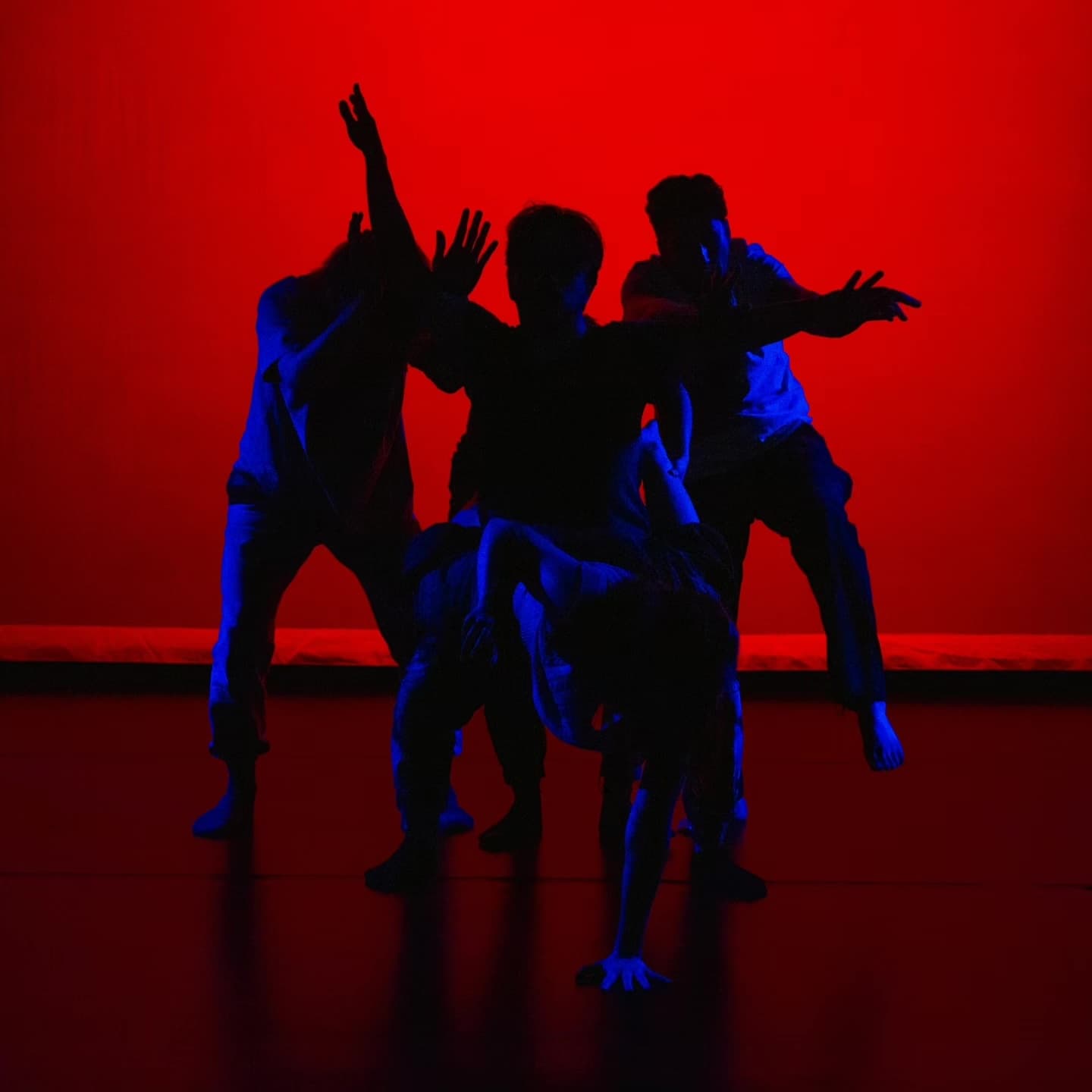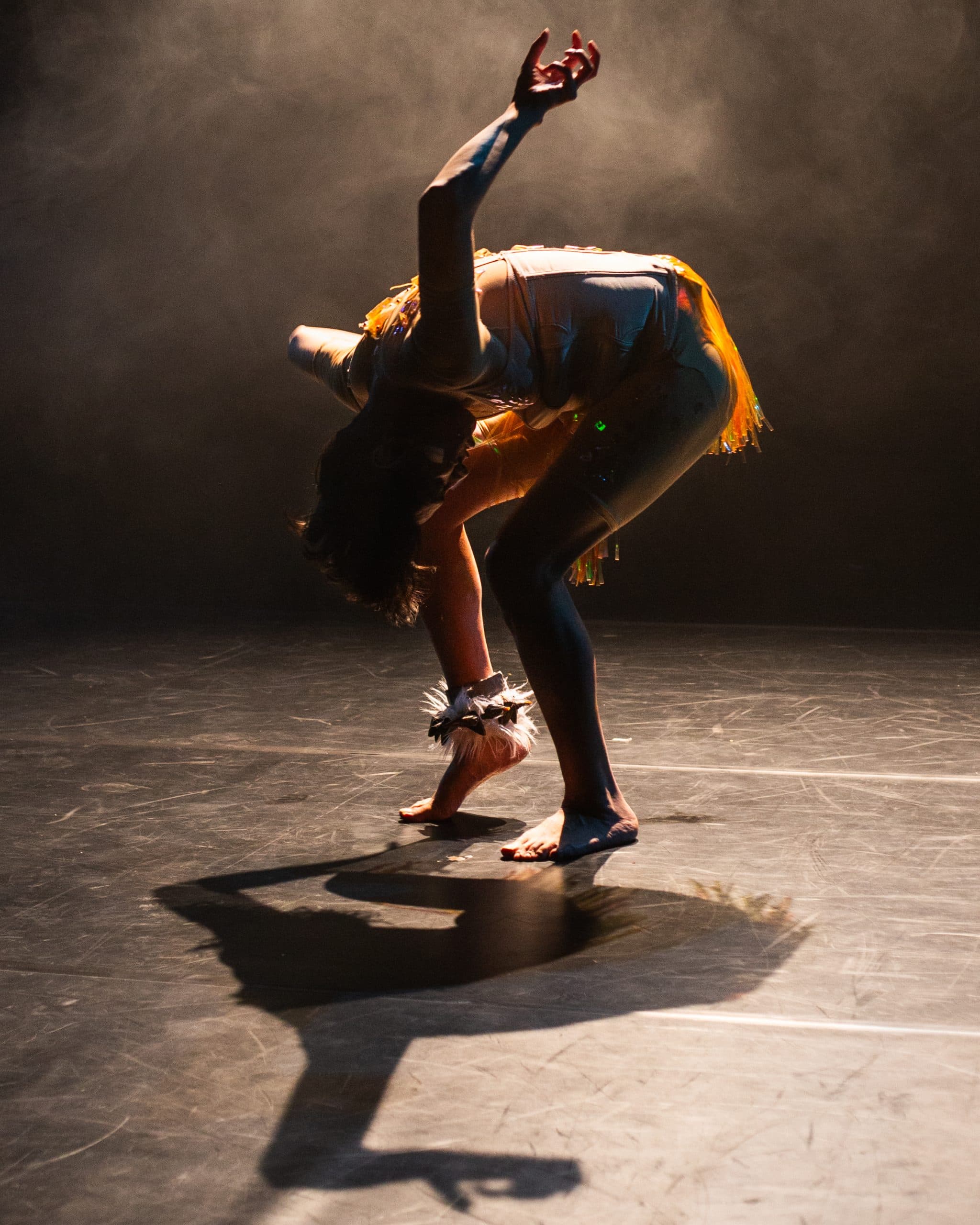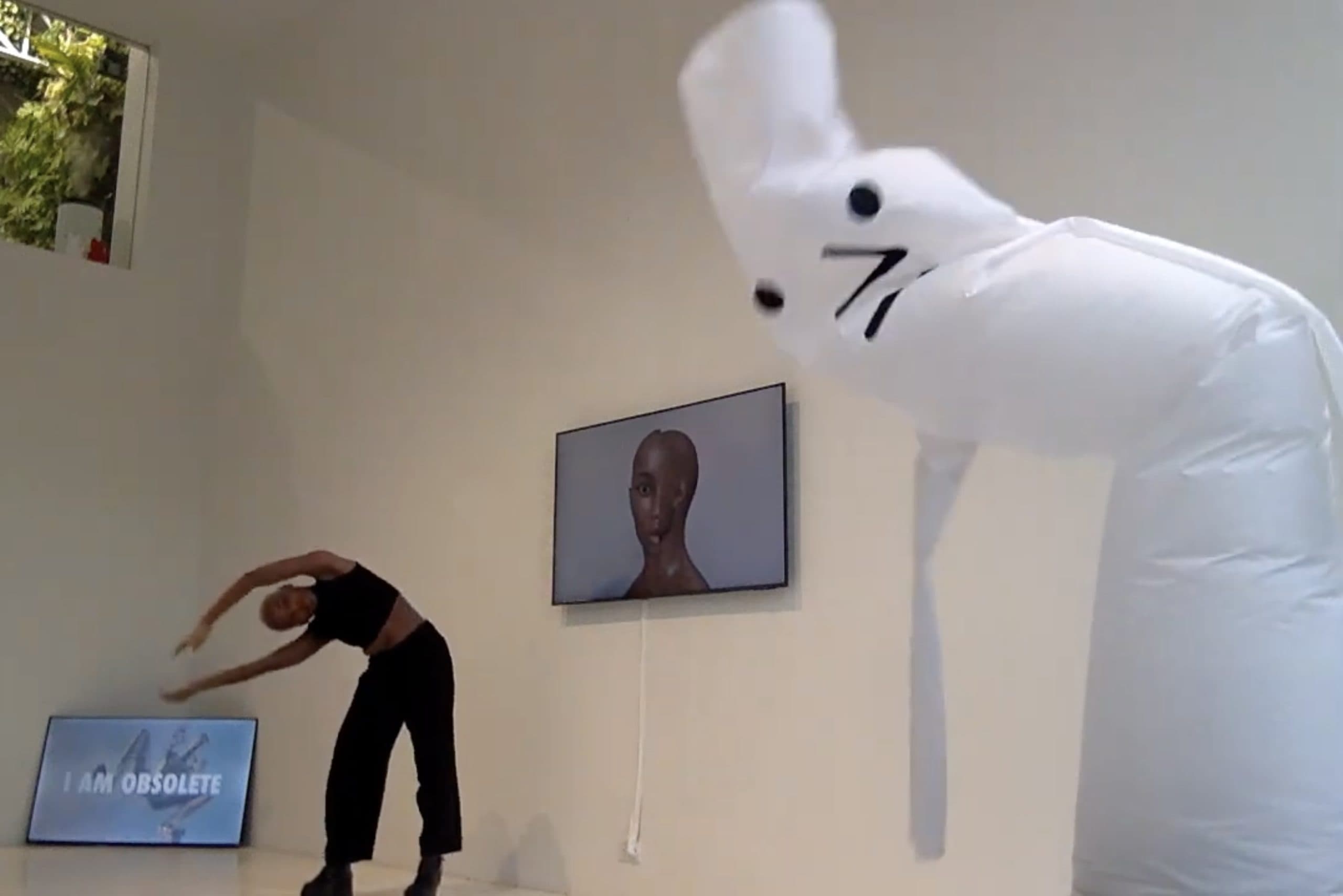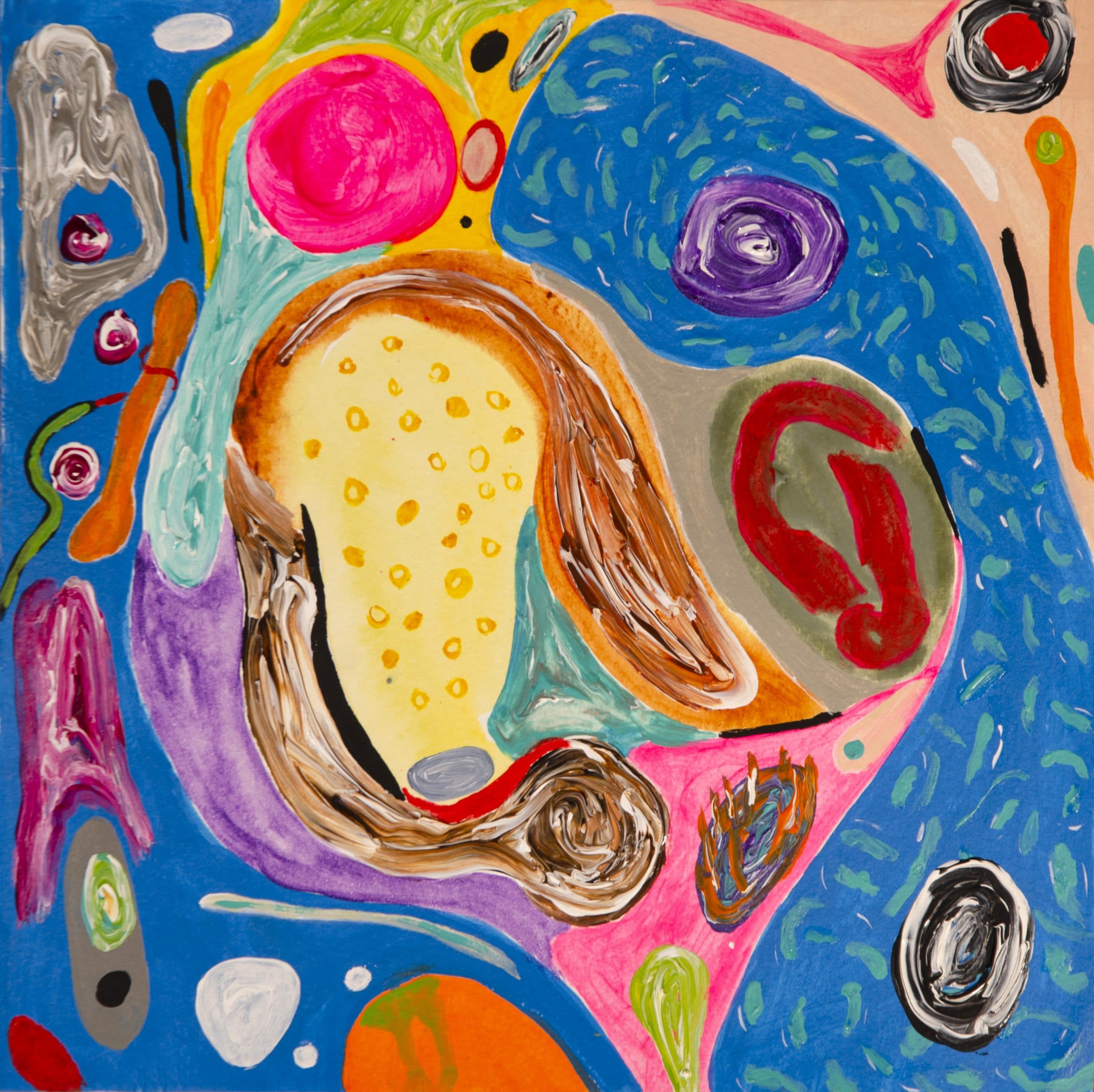
Immatérialité
Artwork courtesy of the artists: Clovis Desvarieux and CP Simonise
Haiti’s history is marked by a continuous influx of foreign powers imposing it’s “ideals” since the 18th century. This is the backdrop in which this spirited discussion between Clovis Desvarieux, CP Simonise and Vivardy Boursiquot takes place, reflecting on its intricate geopolitical history and naming the “lineage of resistance” that acts as a throughline in making and curating art. Facilitated by james oscar, this dialogue revolves around Haiti’s global perception through their extensive cultural production—positioned as a form of “soft power.”
L’histoire d’Haïti est marquée par un afflux continu de puissances étrangères imposant ses « idéaux » depuis le XVIIIe siècle. C’est dans ce contexte que se déroule cette discussion animée entre Clovis Desvarieux, CP Simonise et Vivardy Boursiquot, réfléchissant à son histoire géopolitique complexe et nommant la « lignée de résistance » qui agit comme une ligne directrice dans la création et la conservation de l’art. Animé par James Oscar, ce dialogue tourne autour de la perception globale d’Haïti à travers sa vaste production culturelle, positionnée comme une forme de « soft power ».
CP Simonise
There’s a quote. Can I say it in French?
James Oscar
Mais oui.
CP Simonise
So it’s Maximilien Laroche talking about mythologie haïtienne. He says: N’est donc pas caméléon uniquement celui qui se déguise. L’est tout autant celui qui lève les masques au fur et à mesure qu’un autre les pose.
James Oscar
Can you translate?
CP Simonise
He’s talking about the chameleon. And he’s basically saying that the chameleon is not only the one that is disguising himself. Or in order to remove the disguises, you have to be a chameleon yourself as well.
James Oscar
Interesting.
CP Simonise
Painting for me is kind of like finding this choreography. Internally, my career is dedicated to the freedom and the emancipation of myself externally. I’m an ambassador for my culture, you know? And I think that you have to be you can’t not perform. That’s why I like to work on large formats, because it feels like I’m dancing. I have to be in the flow of myself. I have to be in tune with my truth at the moment, otherwise, my strokes won’t work for me, you know? It’s a physical performance that is generating the idea of my performance for the ultimate goal, which is soft power: Haiti’s stance on the geopolitical map.
Vivardy Boursiquot
I think when you come from Haiti, there’s a lot of expectation in your social and political environment, whether from your upbringing or what the western world expects from you. So I think it’s about going back to the tradition of seeking for freedom. The freedom to to express whatever. To trust your individuality, to express yourself and to not answer to those expectations. I think it is part of—how can I phrase this? It’s about having the freedom to trust your perspective on the world and not follow the discourse—or try to go against the discourse because going against the discourse is also a form of tying yourself in too. It’s about trying to protect that freedom of trusting the way you look at the world and your own perspective on the world and not follow those expectations. I think as a Haitian, there’s a trap of posturing. I think a lot of that posturing comes from trying to talk about every issue all the time. There’s always new conflicts or new catastrophes that people expect a certain answer to. But I think cultivating true freedom is the most ancient thing to do. And that has been the tradition of Haitian artists [by going] very abstract and colorful.
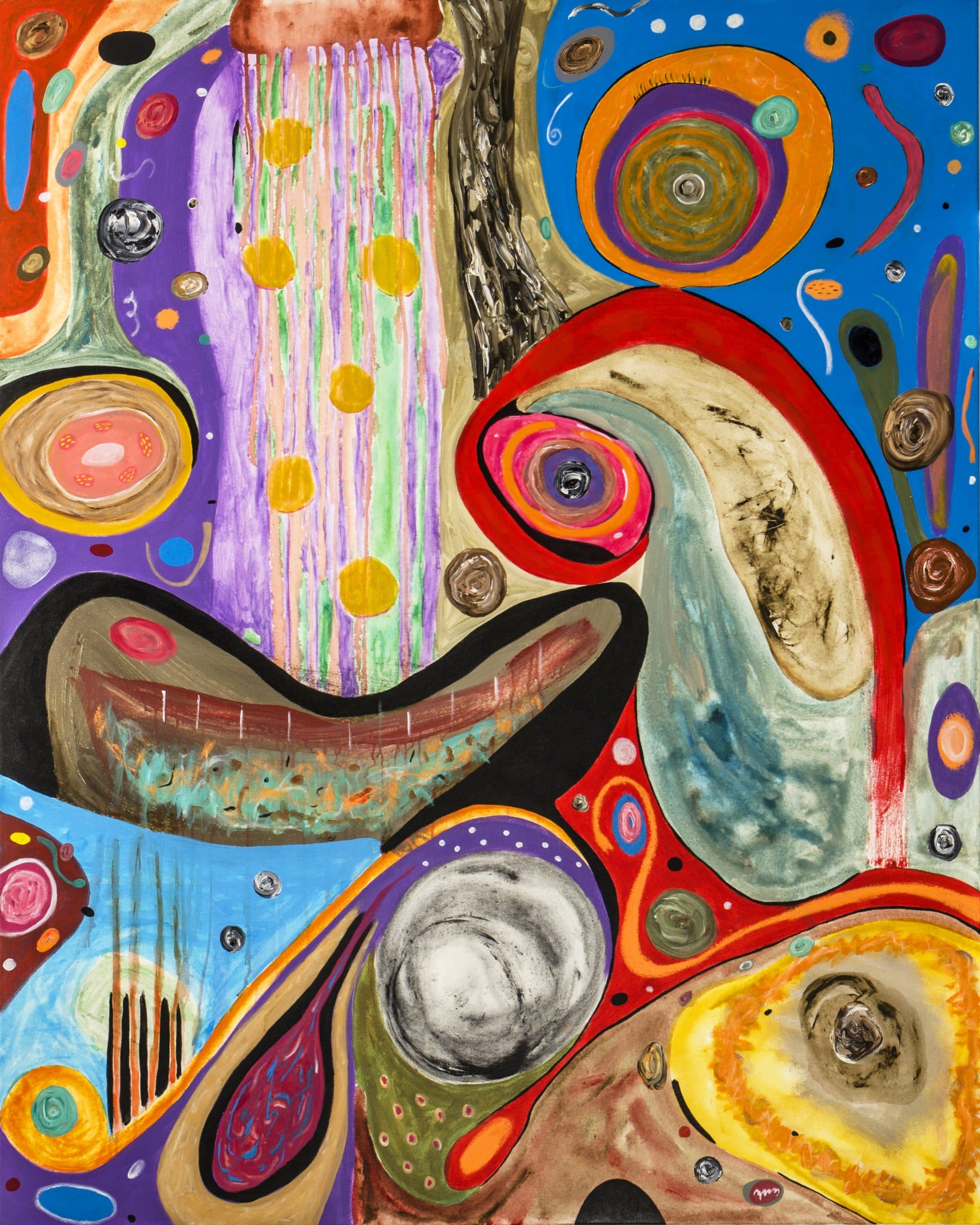
Giving Birth To Yourself
Artwork courtesy of the artists: Clovis Desvarieux and CP Simonise

Le Camélèon
Artwork courtesy of the artists: Clovis Desvarieux and CP Simonise
James Oscar
In relation to that history and the situation in Haiti, is painting something that can access a new possible choreography of the country? Or is it new?
CP Simonise
I don’t think it’s new.
Clovis Desvarieux
I’m not gonna say that our thinking or way of creating is new, however, it fits into a lineage of resistance.
Let’s talk about images. In order for African knowledge to survive in colonial times, they had to appropriate Western images. That's how the saints came into ancient voodoo as we know it. For me, that's a powerful act of resistance. Because you create a new meaning with the image that they give you.
Clovis Desvarieux
Clovis Desvarieux
That’s something that I do a lot in my way of thinking about images and painting: I use Haitian art history. Like when I look at the work of the “great primitives” as they called them like Hector Hyppolite, or classical painters like Jean Claude Legagneur—these are people that purposely created a resistance to their beauty, they created a resistance to their spirituality, they created a resistance to, sometimes, their vanity. So, I see myself as part of that current of thought. Painters, in particular—and writers also—very often offer an alternative way of seeing the world. A very honest way of looking at the world. SoI think it’s a lineage and I’m definitely using painting to celebrate parts of Haiti. I also know that painting is universal because I come from a place where a lot of people don’t read, however, they feel a painting when they see it. And that’s very important to me to be able to have that universal way of expressing myself. And painting helps me do that. So yes, my performance has to do with the creation, history and the survival of the ancient spirit. That’s just the nature of it. And its evolution, also. How it’s conversing with Western art history, how other artists inform the world, how it’s responding to the society we’re living in right now—in Canada, in Montreal, in Haiti.
James Oscar
It’s interesting that the progenitor of the notion of freedom and early modernity is actually Haiti.
Clovis Desvarieux
I see my posture more as a stance, and the choreography as a performance, and that goes for my art practice as well as my response to political structures and so on. Where I put my gaze, I have a stance. That stance allows me to perform in a certain way; it allows me to repeat some gestures much like choreography. I think it’s inherent to the human experience: we stand in a [certain] way, and we perform in another way—sometimes based on that way we stand. So that’s what comes to my mind.
CP Simonise
In my life experience, posture and choreography are politicized. As a trans person, you have to do the work of removing your mask. I have been performing masculinity—I had been performing masculinity for years. So, my transition was to stop performing masculinity and to start performing femininity.
Vivardy Boursiquot
Because I was born here in Canada and then I moved to Haiti when I was pretty young, the code switching was often first here: between my posture at home and outside. When I moved to Haiti, I also changed social class and my environment changed. And I couldn’t play those same roles when I was in Canada because the reality of the country is not the same. So I had two different sides, let’s say. I had to perform different identities depending on where I was. And I learned pretty quickly to learn the different codes. Like I had to accept that [in Haiti,] I was part of the upper middle class, very quickly. And then coming back and dealing with entering the Black community—that has different issues, but are not necessarily mine. So there’s always a different aspect of what Blackness or Haitian means. Being Haitian doesn’t mean the same thing when you’re in Montreal.
It's also a form of chameleon being a chameleon.
James Oscar
CP Simonise
I feel like there’s more freedom in the abstraction freedom—I like the idea of not knowing where I’m going. Yeah, I like that idea. I don’t know. Like some people trace their abstract paintings. I like to just let the water decide something alive. Water does the water designs in my paintings. It’s a living element, being able to decide for you and that’s more freedom than saying: Okay, I’m gonna do a painting about this guy on his horse. I’m talking about decolonization. I’m talking about the history of geopolitics. I’m trying to not have to react to the system or the Empire. In abstraction you have the freedom of just creating your own narrative without risking someone using your image for their political agenda. So yeah, it’s kind of a freedom of just staying away from misinterpretation.
Clovis Desvarieux
What’s figurative about my painting is the matter itself: yellow is yellow, green is green, red is red. Those variable things are the only figurative thing in my painting. Everything else that I tried to do with those things is an abstraction. That’s how I perceive it. And a lot of images that are considered abstract have elements that bring you into a figurative mindset. And a lot of paintings that are considered figurative brings you into an abstracted world. I also want to add to what CP said about how figuration gives you a narrative, which may or may not be politicized—but I think abstraction also is a way of being of political mind, not political. You can say, for example, that you don’t feel anything when you look at a painting because that’s the only an abstraction of colors. Toothpaste. I called a toothpaste painting. I’m trying to make fillings out of it. I’m trying to create meaning out of it. I’m trying to create images out of it. And all those things are going to be an abstraction of blue or red, of yellow, of, of brown or whatever. So it’s, for me, it is a matter of getting to know paint.
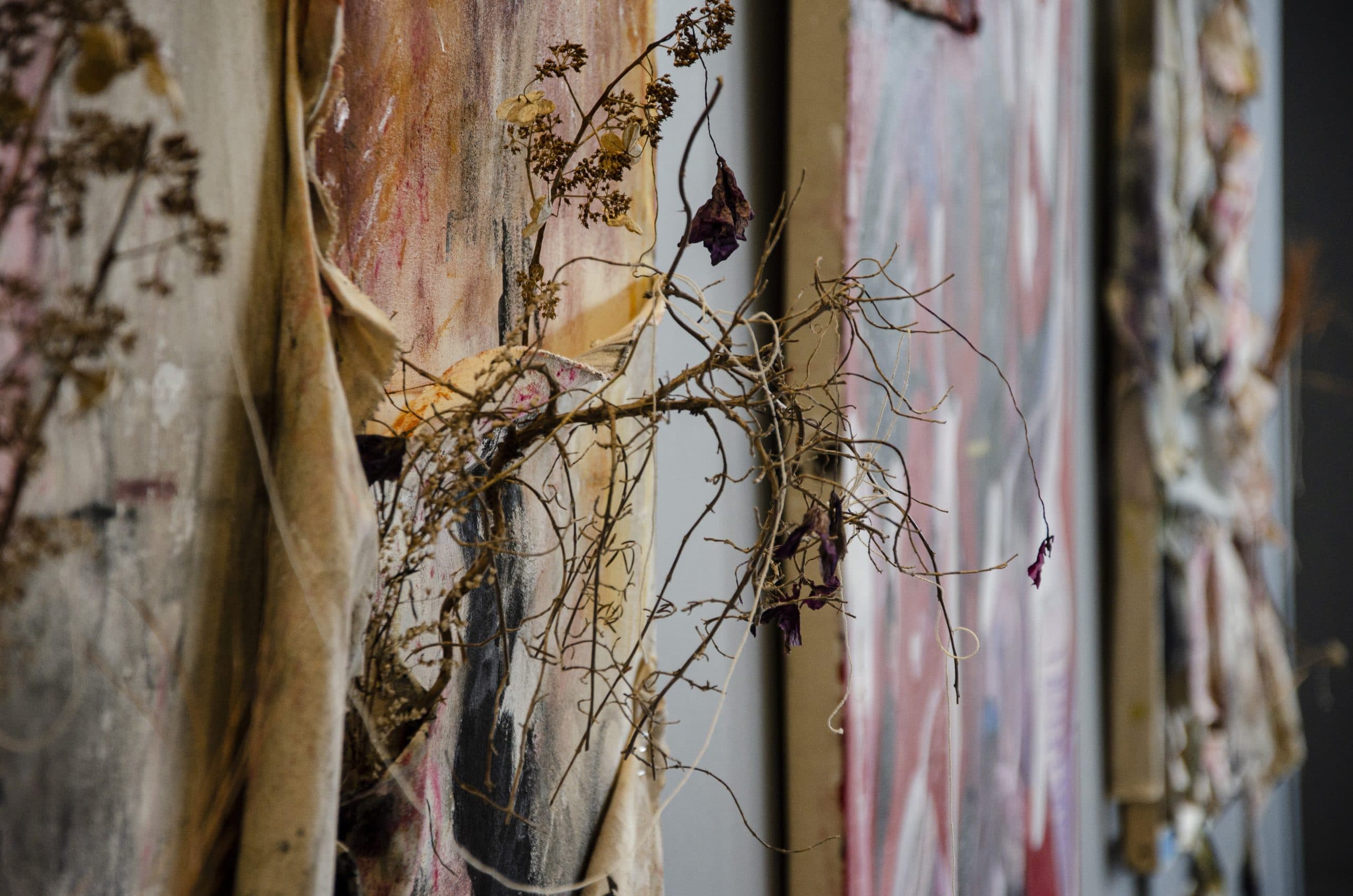
Artwork courtesy of the artists: Clovis Desvarieux and CP Simonise
Vivardy Boursiquot
There’s so much posturing in everything now: representation, symbolism, subtext—there’s always layers of meaning. And I think, with artists like Clovis and CP, when they do those abstractions they might want to say something, but they express it in the truest way possible. There’s an attempt to remove a level of ideology in the process. I know “authentic” is used a lot but I think there’s an authenticity in the process. You have to work on those layers of how people understand certain signals and how those signals might be interpreted. It becomes more complex and conceptual. You can get lost in that process. So, let’s say, what’s figurative is the color: How do you represent it? How do you make an interpretation of that? How do you build a discourse with that? I think when people see that something is more abstract, [they think] it’s hard to understand, but I think it’s actually more direct than that. Yeah, I think it might not be as straightforward as an answer. There’s an authenticity in the abstract, that it’s harder to find in figurative because of those layers of discourse and ideology.
James Oscar
It’s just crazy that this conversation is not going on regularly. And I mean, we know why we’re not stupid.
CP Simonise
Well, it’s part of the performance of the system, to not have these conversations. It would disrupt the choreography, the plan, the colonial choreography.
